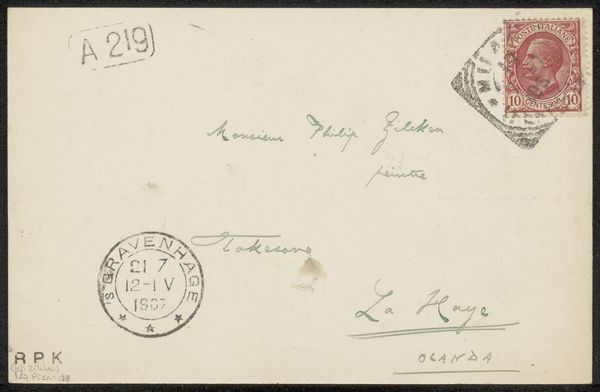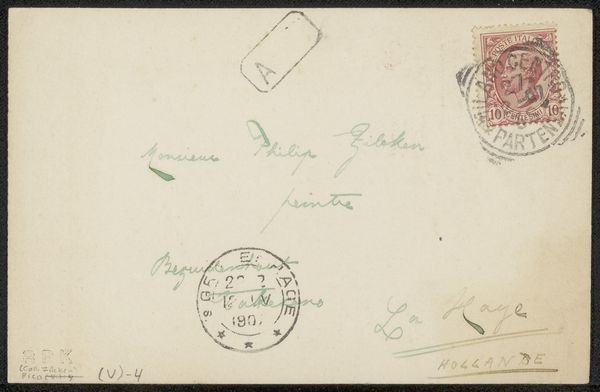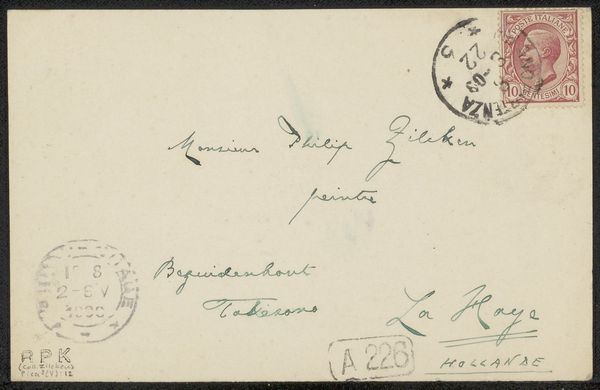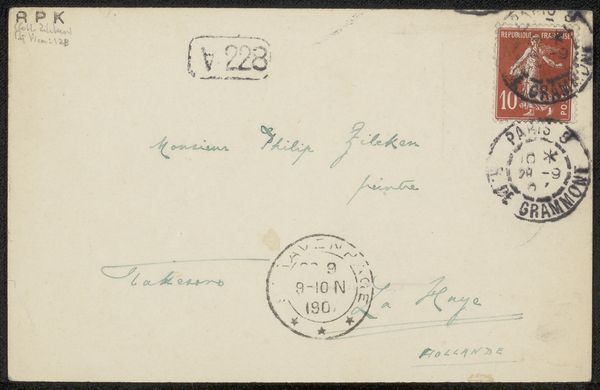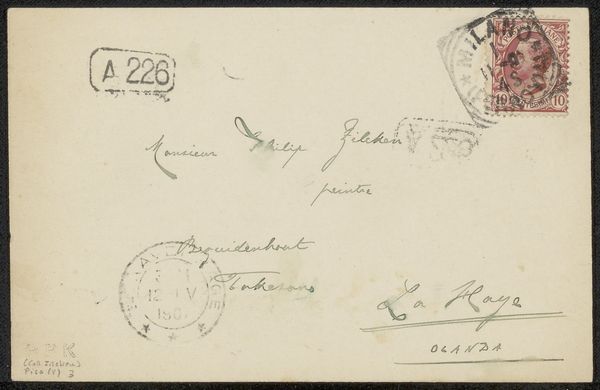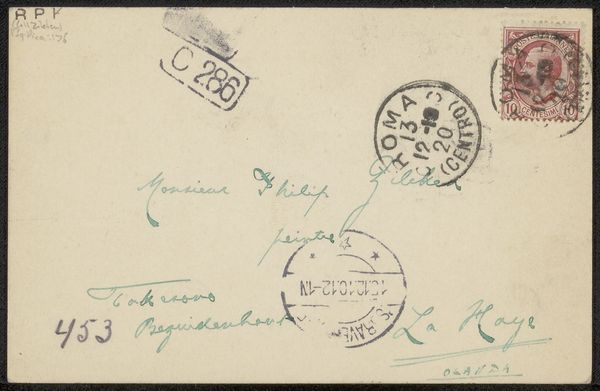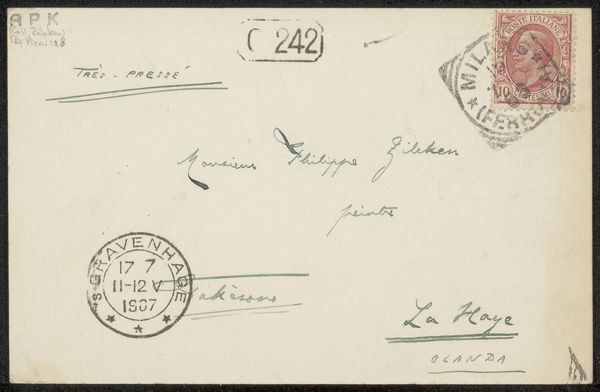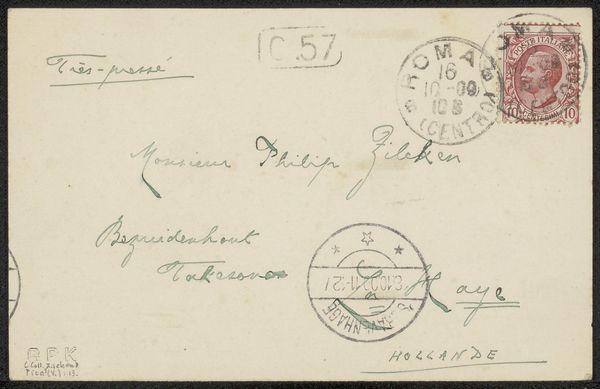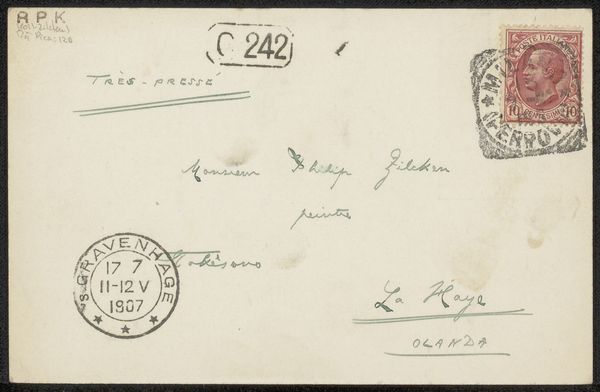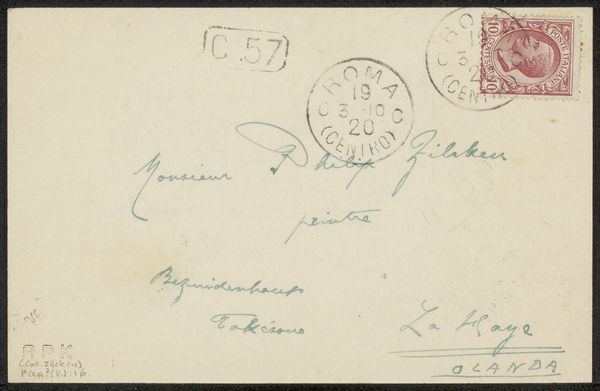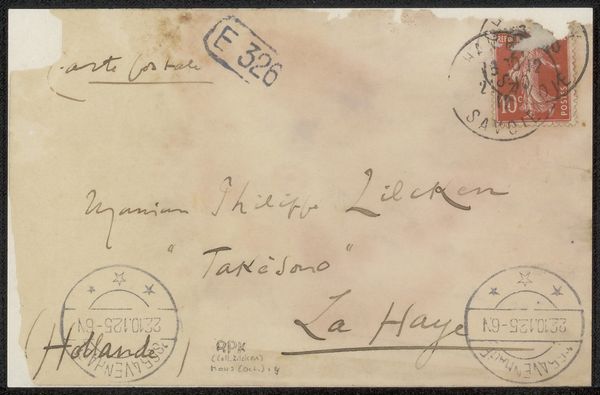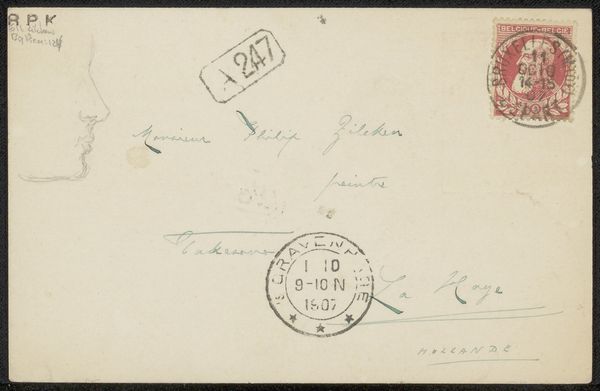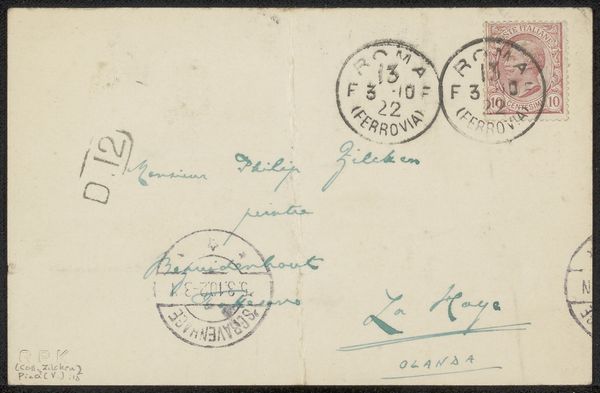
paper, ink, pen
#
portrait
#
paper
#
ink
#
pen
#
modernism
#
calligraphy
Copyright: Rijks Museum: Open Domain
Curator: This piece, "Brief aan Philip Zilcken", which translates to "Letter to Philip Zilcken", is a rather unassuming artifact. It's tentatively dated to 1909, rendered with pen and ink on paper. Its interest for us lies in its relationship to the world of art at the time. Editor: It strikes me immediately with its delicate touch and the way the cursive script dances across the page, each curve carefully rendered, especially the artist’s address notations. The cool bluish-green ink also adds to the impression. Curator: Quite. And this isn't just any recipient. Philip Zilcken was an artist, critic, and writer, very much a figure embedded in the artistic and literary circles of his time. Examining his correspondence opens a small window into these networks. The social function is more valuable to the audience than what information could have been communicated to Zilcken in 1909. Editor: I agree. But note how the flowing calligraphic lines transform utilitarian writing into art itself, in part by employing the paper itself. It invites us to read it both for message and artistic presentation. Do you see the weight in certain areas where it becomes denser in color? Curator: And note, this was modernism's ascendance, as older models were being aggressively critiqued. And for context, while undated definitively, consider the impact on European culture as the First World War became immanent. Correspondence, which are increasingly surviving as their utility declines, took on outsized importance as social cohesion weakened. Editor: I see the connection. The simple materials—paper, ink, and the artist’s very hand—speak volumes, quite apart from what is conveyed on the page through information, revealing Zilcken's importance to other contemporaneous modernists. Curator: Exactly. Letters today might have only archival function, whereas formerly, given limitations in mobility, written missives represented a critical tie binding disparate cultural actors. It reminds us that to experience artworks means interpreting their original utility in different socio-historic terms. Editor: I'm left contemplating not only the aesthetic decisions evident but, just as critically, its subtle embodiment of human relationships preserved across time and culture.
Comments
No comments
Be the first to comment and join the conversation on the ultimate creative platform.
